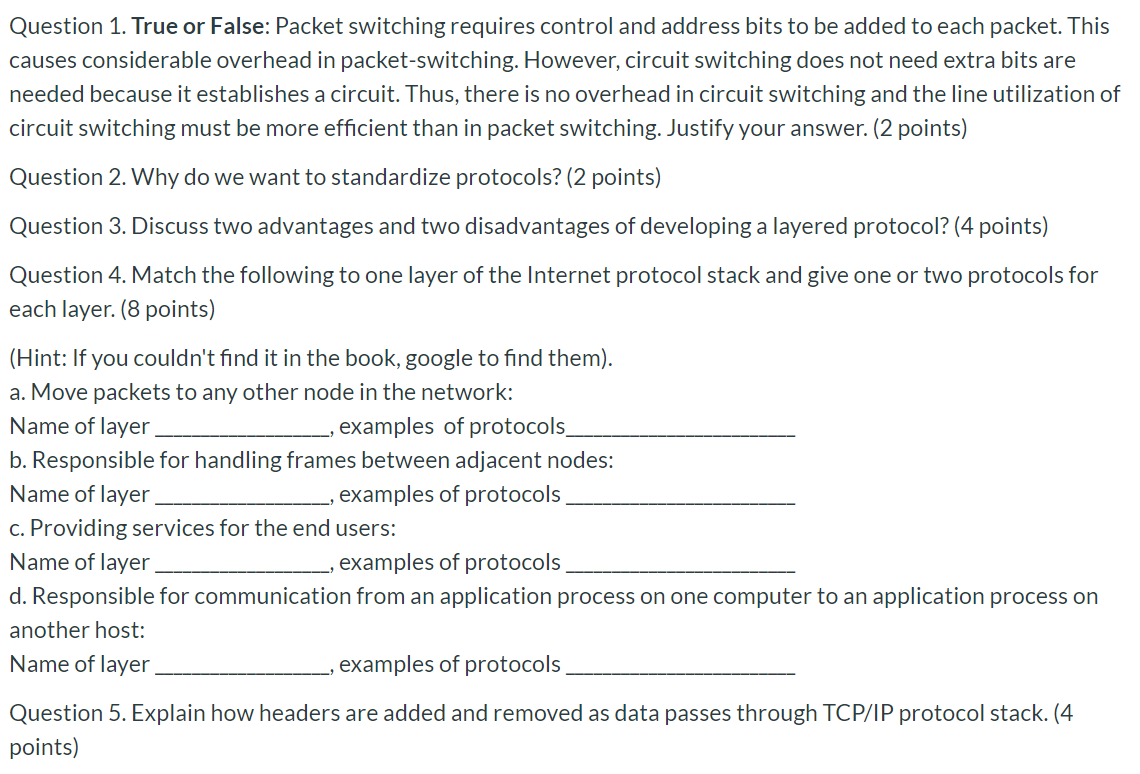
Question 1. True or False: Packet switching requires control and address bits to be added to each packet. This causes considerable overhead in packet-switching. However, circuit switching does not need extra bits are needed because it establishes a circuit. Thus, there is no overhead in circuit switching and the line utilization of circuit switching must be more efficient than in packet switching. Justify your answer. (2 points) Question 2. Why do we want to standardize protocols? (2 points) Question 3. Discuss two advantages and two disadvantages of developing a layered protocol? (4 points) Question 4. Match the following to one layer of the Internet protocol stack and give one or two protocols for each layer. (8 points) (Hint: If you couldn't find it in the book, google to find them). a. Move packets to any other node in the network: Name of layer ___, examples of protocols b. Responsible for handling frames between adjacent nodes: Name of layer _, examples of protocols c. Providing services for the end users: Name of layer _, examples of protocols d. Responsible for communication from an application process on one computer to an application process on another host: Name of layer , examples of protocols _ Question 5. Explain how headers are added and removed as data passes through TCP/IP protocol stack. (4 points) Question 1. True or False: Packet switching requires control and address bits to be added to each packet. This causes considerable overhead in packet-switching. However, circuit switching does not need extra bits are needed because it establishes a circuit. Thus, there is no overhead in circuit switching and the line utilization of circuit switching must be more efficient than in packet switching. Justify your answer. (2 points) Question 2. Why do we want to standardize protocols? (2 points) Question 3. Discuss two advantages and two disadvantages of developing a layered protocol? (4 points) Question 4. Match the following to one layer of the Internet protocol stack and give one or two protocols for each layer. (8 points) (Hint: If you couldn't find it in the book, google to find them). a. Move packets to any other node in the network: Name of layer ___, examples of protocols b. Responsible for handling frames between adjacent nodes: Name of layer _, examples of protocols c. Providing services for the end users: Name of layer _, examples of protocols d. Responsible for communication from an application process on one computer to an application process on another host: Name of layer , examples of protocols _ Question 5. Explain how headers are added and removed as data passes through TCP/IP protocol stack. (4 points)







